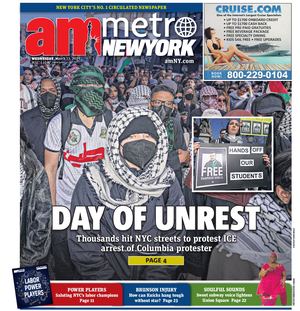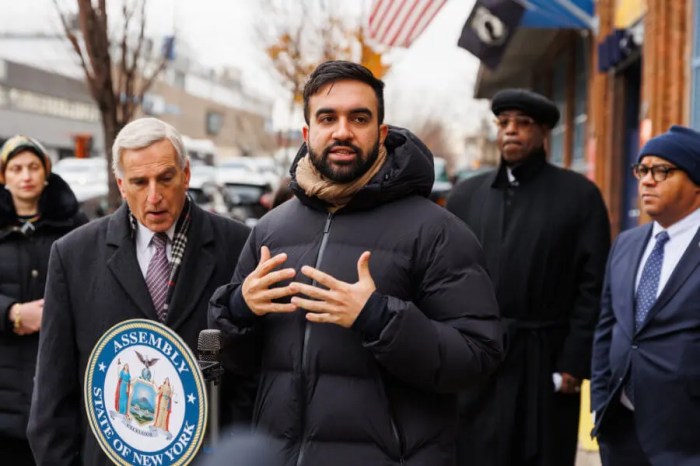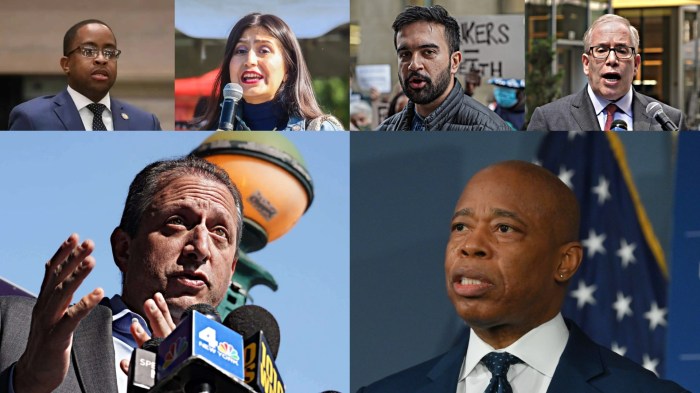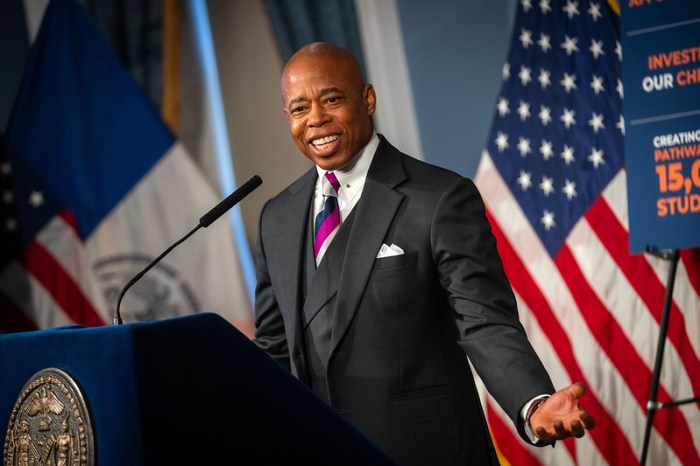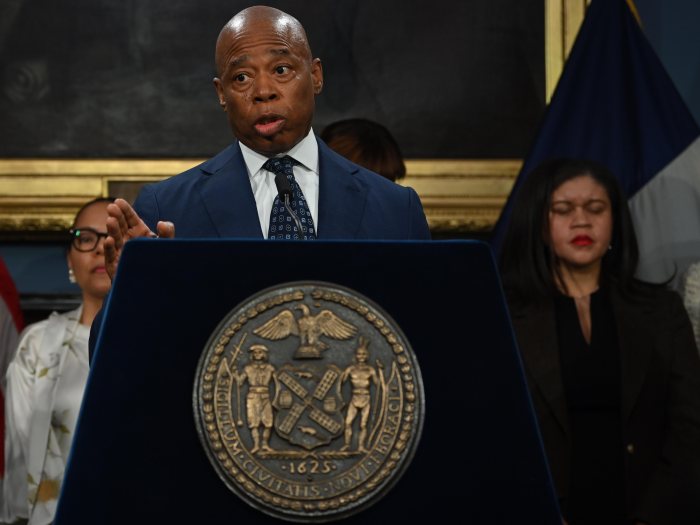New York City lawmakers and advocates are fuming over the Adams administration’s new guidance to city employees instructing them to allow federal immigration authorities to search city property or hand them requested information, even without a warrant, if the workers “reasonably feel threatened.”
The policy, first reported by outlets including Hell Gate and the Daily News, lays out a series of steps for city employees to follow if federal Immigration and Customers Enforcement (ICE) agents show up asking for access to the premises or for information. The one-page memo, distributed by the city on Jan. 13, directs municipal workers to ask the agents for their information, if they have a warrant, and to contact the agency’s general counsel for further instructions.
But it also says that if “at any time” the employee feels threatened or fears for their safety or the safety of others, they should let ICE agents search the location, which could include city schools and shelters, or give them the information they are seeking. That piece of the memo appears to undercut the city’s long-standing sanctuary laws, which bar immigration authorities from entering city property without a warrant.
News of the new policy drew swift outrage from several elected officials, advocates, legal service providers, and even the powerful building service workers union 32BJ SEIU.
City Hall spokesperson Liz Garcia, in a statement, contended the guidance is simply designed to protect city employees from jeopardizing their safety. She also argued that those saying the city is instructing its workers to cooperate with ICE are spreading “misinformation” that “fuels anxiety within immigrant communities.”
“We are responsible for safeguarding the well-being of our city staff, which is why we have directed city employees not to put themselves in harm’s way during federal immigration enforcement interactions,” Garcia said. “Employees are advised to contact their legal counsel in such situations and to avoid verbal or physical altercations, as this could compromise their safety and hinder critical city services.”
When asked whether the guidance undercuts the city’s sanctuary city laws, Garcia said the administration does not see it that way.
However, many others said that is exactly what the memo does.
City Council Member Justin Brannan (D-Brooklyn), called the guidance a “a blinding violation of local law and one that puts frontline city workers in an impossible position” in a Thursday night post on X.
The council member went on to accuse Mayor Eric Adams of yielding to President Donald Trump’s mass deportation push as a means of securing help from the commander-in-chief with his federal indictment.
“The only New Yorker this decision protects is the mayor,” Brannan said. “He is doing Trump’s bidding. Quid pro quo.”
The New York Times reported last week that Adams’ defense attorney, Alex Spiro, suggested to federal prosecutors trading Adams’ cooperation with Trump’s immigration crackdown for dropping the charges against him. Spiro fiercely denied the report, calling it a “complete lie.”
On Friday afternoon, City Council Speaker Adrienne Adams, Deputy Speaker Diana Ayala, Immigration Committee Chair Alexa Aviles said “the Council is considering all its legal options to reverse this appalling memo and hold the Administration accountable.”
State Sen. Zellnor Myrie (D-Brooklyn), who is running for mayor against Adams, accused him of “dismantling” the city’s sanctuary laws to “save his own skin.”
Meanwhile, the Legal Aid Society argued the policy could embolden ICE agents to use threats of violence in order to access city property without a warrant.
“In announcing this significant retreat from the current law, the Mayor has given ICE and other federal law enforcement permission to use threats and intimidation against workers and all New Yorkers to achieve mass deportation,” the group said in a statement.
Since Trump was elected in November, Adams has given mixed messages on how his administration would handle the president’s promise of increased ICE raids in major cities like New York. He has pledged to uphold the city’s sanctuary policies, which bar its cooperation with ICE in many instances, while also repeatedly saying that migrants who commit crimes should not be allowed in the city.
He has not differentiated between migrants who are convicted of a crime on a list of 170 offenses for which the city can cooperate with ICE on, or those who are charged with any violent crime.
Read More: https://www.amny.com/politics/
